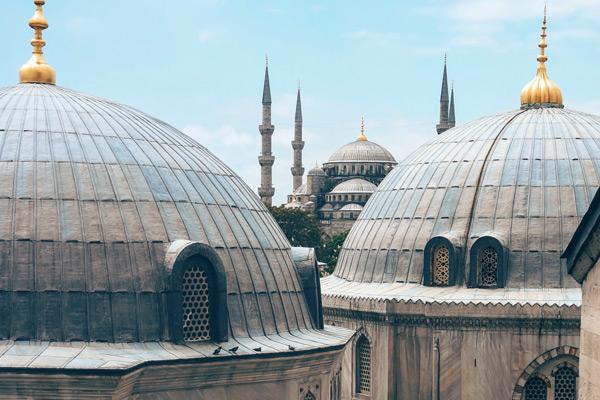Last Friday, the Hagia Sophia – Justinian the Great’s Church of the Holy Wisdom – hosted its first public Muslim prayers as a mosque since 1935. It can be hard for secular and even Western religious minds to wrap their heads around what’s happening.
On the one hand, the Church was conquered in 1453, by the then Ottoman Empire. Turkey’s current President Erdoğan says its conversion back to a mosque will gratify “the spirit of conquest” of Mehmet II. Conversion of religious sites is hardly unknown. On the other hand, the move by Erdoğan, under an ostensibly secular Turkish state, seems motivated to catalyze a religious nationalism, one out of step with Turkey’s avowedly secular recent past, but very much part of a larger global trend.
What we are seeing is neither new nor unexpected, but its particulars make it dangerous and precedent setting. It is also only the beginning.
Why now? The Hagia Sophia has stood as a museum available to all faiths and none for decades. It was symbolic of Turkey’s secular commitment, the legacy of its founder Mustafa Kemal Atatürk. But the many aspiringly secular regimes of the 20th century have witnessed a religious resurgence in the 21st.
India, the world’s largest democracy, has seen a surge in Hindu nationalism to the point that the BJP – a party of Hindu nationalist origin – continues to hold power. Vladimir Putin, the now perpetual leader of a so-called Russian democracy, has revitalized and emboldened Orthodoxy as a key component of Russian identity. China's Communist party may be avowedly atheistic, but it hunts and exterminates its religious minorities and undesirables with the fervor of the most fundamental regime. Hungary, Brazil, the United States of America, the list goes on of great powers for whom secularization has collapsed. The religious have inherited the earth.
The Hagia Sophia's conversion is therefore neither unforeseen nor shocking to regional observers. This, and things like it, are happening everywhere. Yuval Jobani and Nahshon Perez have just written a fine book on it, Governing the Sacred: Political Toleration in Five Contested Sacred Sites. Jobani and Perez write about five different cases: the Devil’s Tower National Monument/Bear Lodge in Wyoming, Ram Janmabhoomi/Babri Pasijid in Uttar Pradesh, the Western Wall, the Church of the Holy Sepulcher, and Temple Mount/Haram esh-Sharif, all in Jerusalem. They could easily have added the Hagia Sophia.
Each case is an example of an approach to contested sacred sites, from “non-interference,” to “separation and division,” “preference,” “status quo,” and finally to “closure.” Each has its drawbacks and advantages, but in moving from “status quo” to “preference,” say Jobani and Perez, the Turkish government carries risks not just for a sacred site. State support of religion can quickly lead to state control of religion, they say. State funding is a significant cause of corruption in religious groups, and finally state support tends to be a significant cause in stagnation and devitalization of religion (116). Controversially, their own case for this is the Israeli State's approach to the Western Wall. Israel is an unlikely tutor for the Turkish conundrum, but it may be just the one they need.






